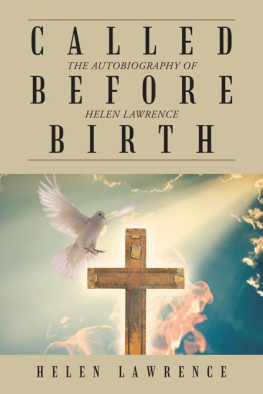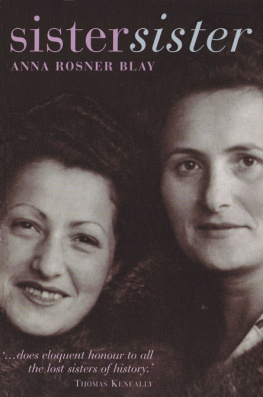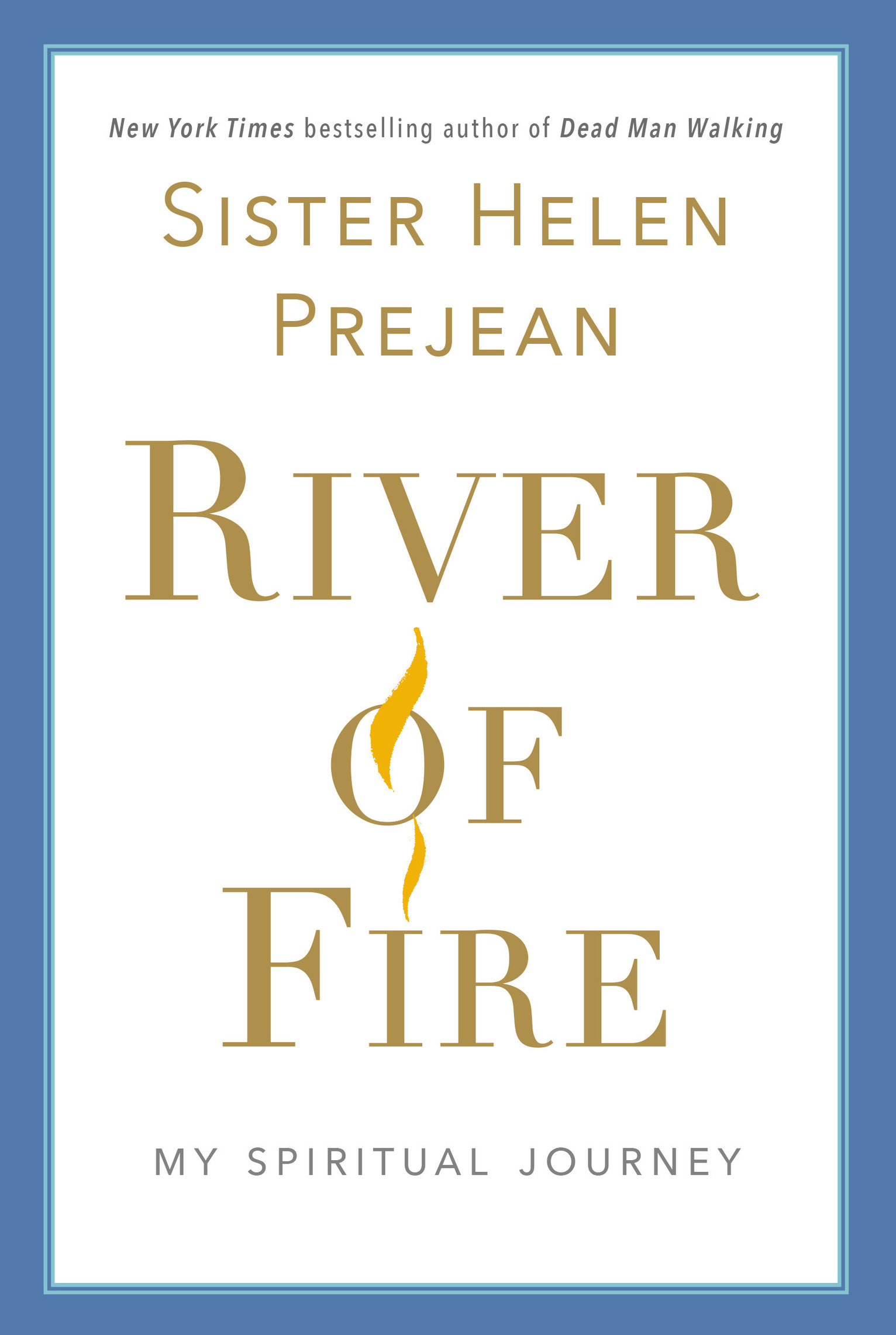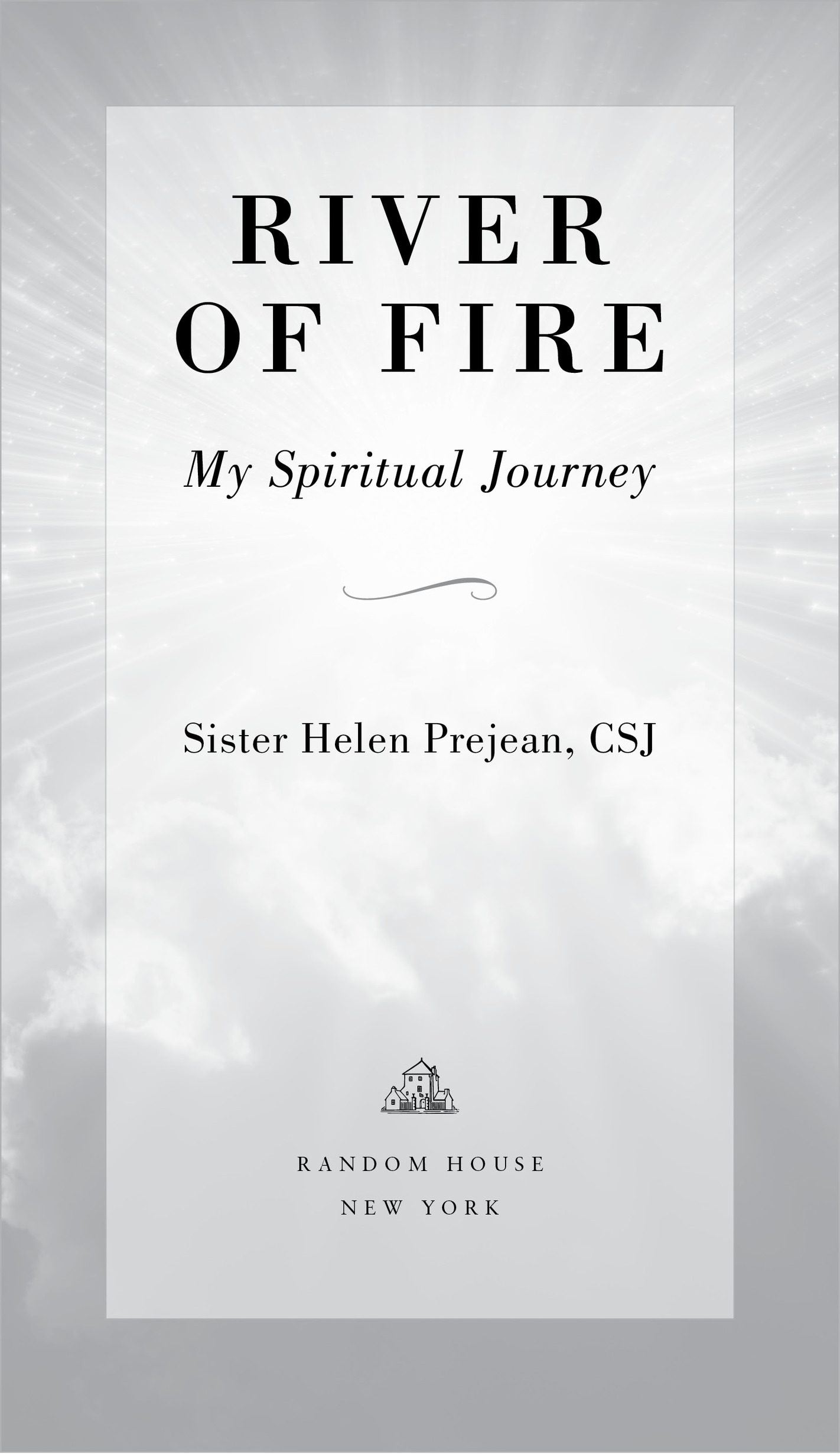Contents
Landmarks
Print Page List
River of Fire is a work of nonfiction. Some names and identifying details have been changed.
Copyright 2019 by Helen Prejean, C.S.J.
All rights reserved.
Published in the United States by Random House, an imprint and division of Penguin Random House LLC, New York.
R ANDOM H OUSE and the H OUSE colophon are registered trademarks of Penguin Random House LLC.
Grateful acknowledgment is made to the following for permission to reprint previously published material:
H OUGHTON M IFFLIN H ARCOURT P UBLISHING C OMPANY AND T HE J OY H ARRIS L ITERARY A GENCY, I NC.: Sunday School, circa 1950 from Revolutionary Petunias and Other Poems by Alice Walker, copyright 1970 and renewed 1998 by Alice Walker. Print rights throughout the United Kingdom and electronic and audio rights throughout the World are administered by The Joy Harris Literary Agency, Inc. Reprinted by permission of Houghton Mifflin Harcourt Publishing Company and The Joy Harris Literary Agency, Inc.
L IVERIGHT P UBLISHING C ORPORATION: Three lines from be of love(a little) from Complete Poems: 19041962 by E. E. Cummings, edited by George J. Firmage, copyright 1935, 1963, 1991 by the Trustees for the E. E. Cummings Trust, copyright 1978 by George James Firmage; no time ago from Complete Poems: 19041962 by E. E. Cummings, edited by George J. Firmage, copyright 1950, 1978, 1991 by the Trustees for the E. E. Cummings Trust, copyright 1979 by George James Firmage. Reprinted by Liveright Publishing Corporation.
LIBRARY OF CONGRESS CATALOGING-IN-PUBLICATION DATA
Names: Prejean, Helen, author.
Title: River of fire : my spiritual journey / Sister Helen Prejean, C.S.J.
Description: First Edition. | New York : Random House, 2019.
Identifiers: LCCN 2018051678 | ISBN 9781400067305 | ISBN 9781984855411 (ebook)
Subjects: LCSH: Prejean, Helen. | Sisters of Saint JosephBiography. | NunsUnited StatesBiography.
Classification: LCC BX4705.P691673 A3 2019 | DDC 271/.97602 [B]dc23 LC record available at https://lccn.loc.gov/2018051678
Ebook ISBN9781984855411
randomhousebooks.com
Title-page and part-title-page images: copyright iStock.com/IgOrZh
Book design by Victoria Wong, adapted for ebook
Cover design: Dan Rembert
v5.4
ep
Ask not for understanding,
ask for the fire.
St. Bonaventure
Preface
They killed a man with fire one night.
Strapped him in an oaken chair and pumped electricity into his body until he was dead.
His killing was a legal act.
No religious leaders protested the killing that night.
But I was there. I saw it with my own eyes.
And what I saw set my soul on fire
a fire that burns in me still.
In the 1980s I was living in an African American housing project in New Orleans called St. Thomas. This was a departure from my previous life as a Sister of St. Joseph, largely spent among white suburban Catholics, teaching in Catholic schools or directing religious education in Catholic parishes. I had joined the Congregation of the Sisters of St. Joseph at the age of eighteen, inspired like many other young women of that era by a desire to serve God with my whole mind, soul, and heart. At that time we had a clear idea of what that meant. But times would change.
First came the transformative event in the Catholic Church of a global council called Vatican II (196265) that inspired women religious to return to the Gospels and rethink their mission in response to the needs of the world. And then gradually I underwent my own transformationfollowing a path first charted by Jesus that led to the poor, and to those whom many dismiss as throwaway people.
One day I received a request to correspond with a prisoner on death row. I didnt know that in responding to that request I would be taking the first steps on a path that would forever transform my life. That journey culminated in my book Dead Man Walking (1993), which was made into an Academy Awardwinning film by Tim Robbins (1995). Suddenly, I was thrust into public debate, and soon found myself known as the Death Penalty Abolitionist Nun.
Once when I was inside the Louisiana death house awaiting an execution, Captain John Rabelais, a guard, asked: Whats a nun doing in a place like this?
Here is an account of my journey to the killing chamber that night and the spiritual currents that pulled me there.
Its a river Im riding.
I invite you to pitch your boat into its current and come with me.
Introduction
What its always been about for me is the spiritual energy, the power that flows through us, lights us up, and enlivens whatever we touch. For me, that energy has always been connected to God. Call it Mystery. Call it Grace. Call it the luminous center we touch sometimes and dont know what to call it, but we know that being in its presence fills us with confidence and peace.
I learned as a child that I was created to love God with my whole heart and mind and soul and to love my neighbor as myself, and Jesus, Gods Son, would show me how to do it. And the goal of it all: to make it through this life so I could be happy with God forever in heaven. Getting to heaven was really, really big. Catholics call it the Beatific Vision. Seeing God face-to-face.
Wouldnt it be wonderful to love God so much that I wouldnt be selfish ever again, or obsess about myself and what I need and what I want and what I feel? Wouldnt it be drop-dead wonderful (a requirement, actuallythe dropping dead) to be so free of ego? Just imagine being so on fire with love for God that I could be a martyr and sing and make jokes even while they were torturing me. Like St. Lawrence on the gridiron being roasted to death and quipping to his executioners: I think Im done on this side. Time to turn me over.
Thats what I call spiritual power.
At the age of eighteen I chucked every worldly pleasure I knew to pursue it. I entered the convent to become a nun.
Needless to say, convent life in the late 1950s was a very different kind of world. How different? Maybe this description of our life back then can help ease you in:
A young woman entering a Roman Catholic religious congregation expected that most things would remain the same for the rest of her life. Once she chose a nuns vows of poverty, chastity, and obedience she would have very few decisions to makeever againabout her lifestyle and work. Upon arising each morning she would put on a long and flowing black, brown, or white dress and the medieval-style head wrap and veil that the members of her order had donned for generations. She would eat meals in silence, with the sisters seated in order of rank. Standardized prayers would be recited at the convent at specific times throughout the day. She would be assigned work as a nurse or a teacher in a Catholic hospital or school, but other activities outside the convent, including family visits, would be rare and highly regulated. Contact with lay persons would be restricted to workplaces and medical visits. Superiors could open and review the letters she received and wrote. The sister would be required to ask her superior, in ritualized fashion, for permission to use objects such as soap, stationery, and thread. Exclusive (particular) friendships with other sisters would be discouraged for fear that they would undermine community harmony.











